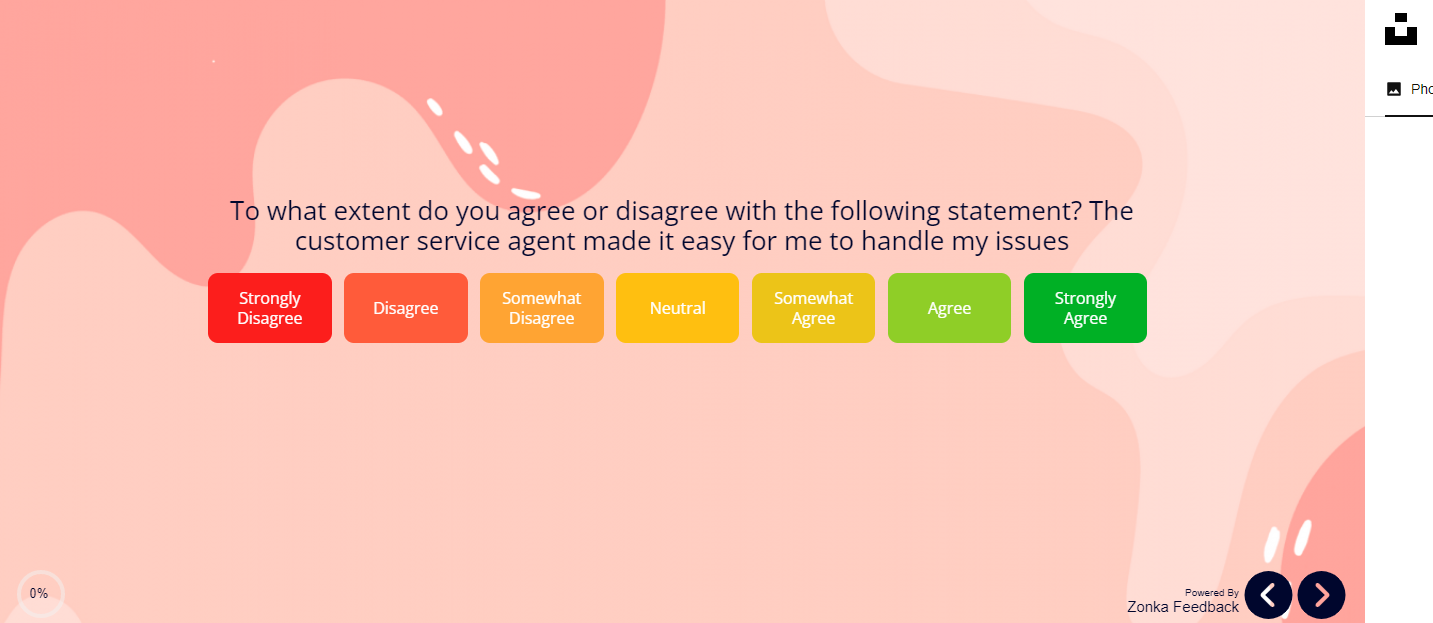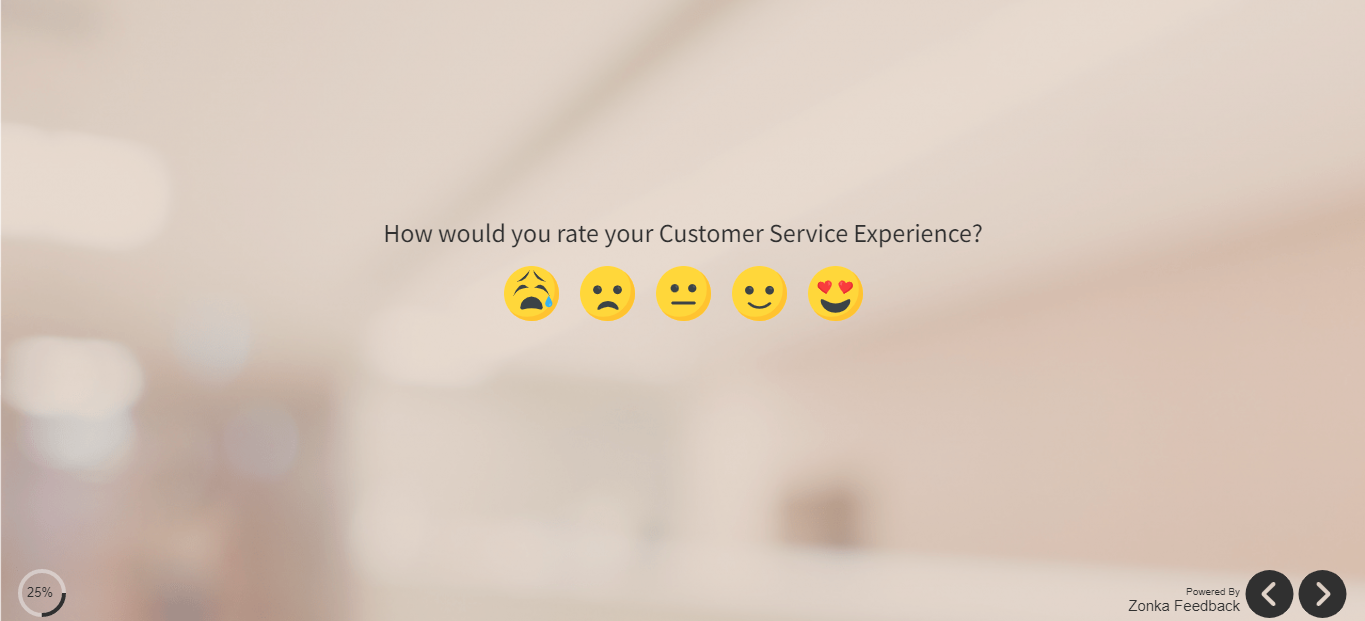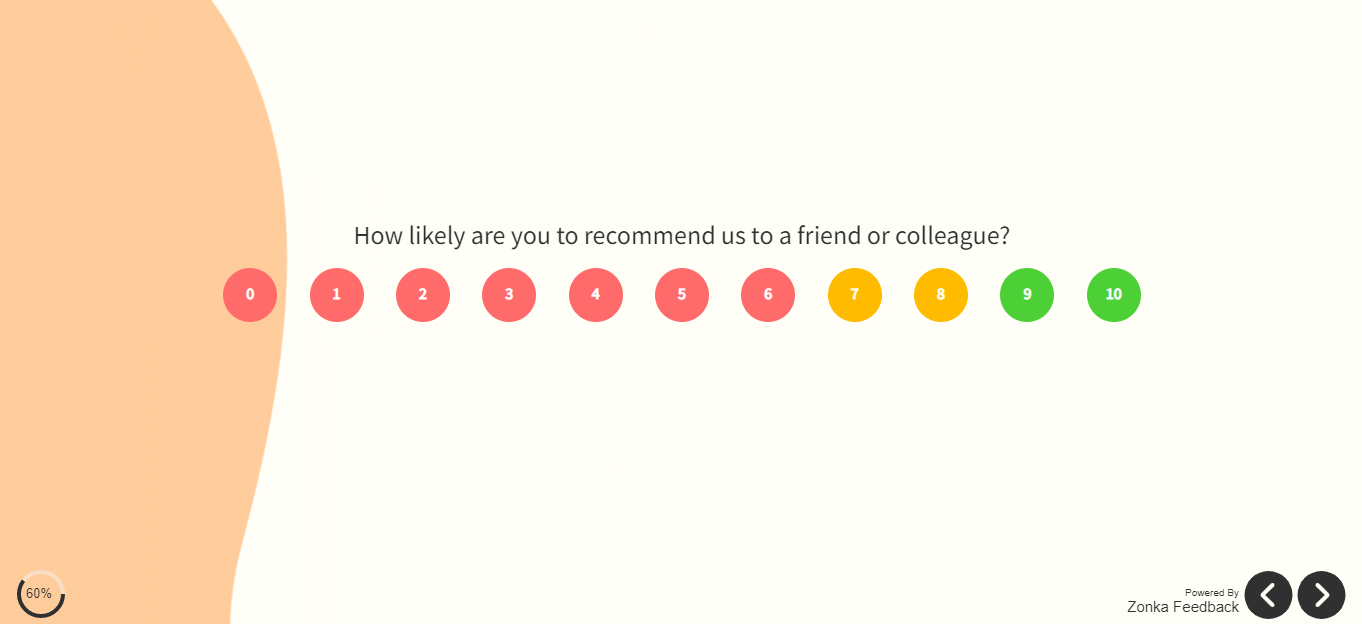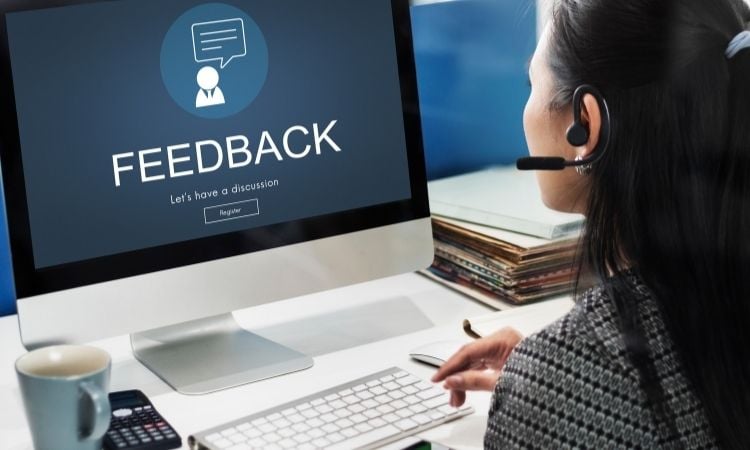Customer Service Agents are the heart of any organization. They might not be the decision-makers or the ones pulling the ropes but they are definitely the ones interacting with the customers and being out there as the face of the company. Their performance can have a direct effect on Customer Experience that can be a major deciding factor in the success of your organization.
While it’s important to have a great product that can compete in the market, it is equally important to have robust Customer Service that can offer solutions and satisfaction to customers who might face any problems using those products or services. Measuring Customer Service Performance is important, now more than ever, because now the connotations of Customer Service have changed and it’s all about providing a seamless experience to the customers who will definitely be forming some opinions about your brand after that call or chat with Service Agent.
In this article, we'll be discussing Ways to Measure Agent Performance and important metrics to keep a close eye on. Read on.
How to Measure Efficiency of Customer Service Performance?
More often than not the Customer Service teams gather high volumes of data collected from the help desk and other platforms that focus on diverse business processes. These data can help monitor crucial Customer Service Metrics.
These metrics can give reliable insights into the efficiency of your Customer Service Performance by counting in different KPIs. Organizations can also utilize employee monitoring software and work time tracking tools to gain a broader picture and better understand the specific tasks and activities that contribute to the success of their customer service teams.
Define Customer Service Goals before Agent Performance Metrics
One of the biggest mistakes you can make while trying to Improve Agent Performance is by jumping onto analyzing different KPIs without knowing how it would benefit your organization. It is crucial to define a set of goals you’re trying to achieve and base your findings on that to analyze whether the performance of your Customer Service is acceptable or not.
The key to defining goals is to set the right objectives. For instance, to effectively measure important KPIs –
- Your goal should be specific and concise
- The goal should be measurable for it to give you actionable Customer Insights.
- A milestone should be established to provide an achievable target to the agents.
- Considering your target and the type of campaign, you must set an attainable target.
Industry Standards for Agent Performance Metrics
When it comes to improving the performance of agents and overall Customer Service, Customer Response data and metrics can play an important role. Agent Performance Metrics allow businesses to understand the consequences of day-to-day actions on Customer Experience and enable them to set & monitor goals.
While different organizations ask for the analysis of different KPIs, there do exist some standards for these metrics in the world of Customer Service. The best practices involve measuring key focus areas to improve Customer Satisfaction and enhance agent performance using Customer Service Surveys. Mentioned below are the three key areas to focus on while measuring Agent Performance Metrics:
1. Agent Productivity
.jpg?width=757&height=505&name=andreas-klassen-gZB-i-dA6ns-unsplash%20(1).jpg) Agent Productivity Metrics offers you a way to track and measure the efficiency of your Customer Service Agents using call records or monitoring tickets from the time they are created to the time of getting closed. Using these metrics you can not only improve agent performance but also find areas that need improvement. Although there are plenty of Agent Performance Metrics to look out for, there are a few top metrics to look out for. Here are the most important ones:
Agent Productivity Metrics offers you a way to track and measure the efficiency of your Customer Service Agents using call records or monitoring tickets from the time they are created to the time of getting closed. Using these metrics you can not only improve agent performance but also find areas that need improvement. Although there are plenty of Agent Performance Metrics to look out for, there are a few top metrics to look out for. Here are the most important ones:
1.1 Calls/Tickets Handled Rate
This Agent Performance metric gives you data on the number of calls/tickets handled by an agent within a specific time period. These metrics can be further divided into two types:
- Customer Service Agent Performance
It tells about the total calls handled by a specific Customer Service Agent. - Helpdesk Performance
It tells about the total number of tickets handled by the Helpdesk.
1.2 Average Handling Time
Average Handling Time gives data on the average time spent by agents in completing a single Customer Interaction. It is a common metric to evaluate Customer Service Agents based on their resolution time as most organizations put efforts to reduce their waiting time and improve overall retention rates. Those resolving issues faster with faster AHT can be considered high-performing agents.
1.3 Average Response Time
Average Response Time refers to the time taken by the agent to respond to customer queries. As per industry standards, the Average Speed of an Answer is somewhere around 28 seconds. Going over this time can lead to higher customer dissatisfaction, higher agent turnover, and an indication of accessibility issues.
2. Customer Experience
.jpg?width=757&height=505&name=blake-wisz-GFrBMipOd_E-unsplash%20(1).jpg)
As the name suggests, Customer Experience revolves around the overall satisfaction and perception of customers based on their experience with Customer Service Agents. It’s fairly easy to find it out using surveys that enable customers to rate their satisfaction and experience with your product, services, and organization. Based on their responses, you can work towards making improvements to that experience.
2.1 Customer Effort Score
 When it comes to measuring Customer Experience with the agents, you can start out by measuring the Customer Effort Score. CES metric allows you to identify how much effort customers have to put in with the Customer Service Agent to get their issues resolved, use your product, make a purchase, and so on.
When it comes to measuring Customer Experience with the agents, you can start out by measuring the Customer Effort Score. CES metric allows you to identify how much effort customers have to put in with the Customer Service Agent to get their issues resolved, use your product, make a purchase, and so on.
2.2 Customer Satisfaction Score
 Customer Satisfaction Score gives you data on the overall satisfaction of your customers with your service. CSAT surveys can be sent to the customer right after an agent interaction or ticket closure to assess their satisfaction with your team. Also, these surveys can be combined with a CES survey to measure customer satisfaction on a scale of 1-5. You can dig deep into customers’ perceptions by following up with an open-ended question asking customers to elaborate on their choice.
Customer Satisfaction Score gives you data on the overall satisfaction of your customers with your service. CSAT surveys can be sent to the customer right after an agent interaction or ticket closure to assess their satisfaction with your team. Also, these surveys can be combined with a CES survey to measure customer satisfaction on a scale of 1-5. You can dig deep into customers’ perceptions by following up with an open-ended question asking customers to elaborate on their choice.
2.3 Net Promoter Score
 Lastly, measuring the customers' loyalty can be equally important to understand how likely they are to recommend your brand to their friends, colleagues, or family. The NPS surveys usually only ask one question to uncover the customer’s overall satisfaction with your business.
Lastly, measuring the customers' loyalty can be equally important to understand how likely they are to recommend your brand to their friends, colleagues, or family. The NPS surveys usually only ask one question to uncover the customer’s overall satisfaction with your business.
On the basis of the results, you can segment your customers into categories – Promoters, Passives, and Detractors. The NPS question can be followed by an open-ended question asking the reason behind their choice to get a better context into their responses. That can give you actionable data to make improvements for turning those detractors into promoters.
3. Call Initiation
The first contact of customers with your organization’s Customer Service team may imply that they value you as a customer. Measuring these metrics gives you insights into the time between customers’ contact initiation and actual agent interaction.
Know that the perception of a customer is created even before they engage with the agent. The hold time and the way you communicate the overall wait time can either give you some loyal customers or give you a bunch of detractors.
3.1 First Response Time (FRT)
First Response Time indicates the amount of time taken by the agent in the initial stage to respond to a customer query or support ticket. Whenever customers face any issue, they expect a quick response and that’s why it is important to measure these metrics as they can give you insights into agent performance.
You can further improve the First Response Time by setting up processes in place to ensure customers are informed when they can get in touch with the Customer Support Agents.
3.2 Abandoned Calls Rate
This is yet another important Customer Service Metric that plays a key role in measuring Customer Satisfaction. The main reason why the abandonment rate rises is due to a long wait time.
When a customer has to wait for a long time to get in touch with the Customer Service Agent, it often leads to disappointment. By measuring these Agent Performance Metrics, organizations can develop strategies to deliver proactive support and improve customer experience.
3.3 Issue Resolution Rate
Issue Resolution Rate is a crucial Agent Performance Metric to track as it gives you a percentage of actual issues resolved by the agents out of total queries received. These metrics indicate the efficiency of the Customer Service teams and help you find out why some issues are not getting resolved.
For improving the resolution rate, an organization needs superior back-end support to resolve issues efficiently. Also, the best practice involves letting the customers know about the approximate duration they may have to wait for query resolution.
To know more about crucial Agent Performance Metrics to measure, you can refer to our blog 17 Customer Service Metrics You Should be Measuring.
How to Improve Customer Service Agent Performance?
While help desk integrations can help track all the queries handled by the agents over a specific duration, the analysis of issues handled by the agents is delivered with agent performance reporting.
This allows organizations to keep track of high-performing agents as well as the ones who don’t do that well. In order to improve agent performance, Customer Service teams can use the insights from the metrics to:
1. Develop Extensive Learning Programs
Tailor-made learning programs based on the metrics insights can help in the development of Customer Service Agents, making it easier to measure their progress over time.
2. Utilizing Service Agent Evaluation Forms
Using agent evaluation survey forms enables customers to score conversations on various factors. The responses can help agents figure out where they can improve based on customer sentiments.
3. Improve Customer Engagement
Among other measurable KPIs, there are some that can’t be put into numbers like the soft skills or engagement skills of the agents. But using the right AI tools, Customer Service teams can pair the sentiment of customers with the action of agents to find out the soft skills displayed by the agents, for instance, empathy and patience. Moreover, they can use LLM agents to provide instant and personalized responses to customer inquiries, freeing up human agents to focus on more complex issues.
4. Mitigating Compliance Risk
By effectively identifying compliance violations, teams can address the gaps in compliance before it gets out of hand.
5. Improving Self-Service Processes
By improving self-service processes, we mean improving the resources and knowledge center of your organization. This knowledge center should possess key resources and insights that can help the customers and agents navigate the product and resolve issues quickly & effectively.
In order to monitor the success of these programs in regard to agent performance, Customer Service teams usually look at the impact of agent performance metrics mentioned before, along with monitoring the improvements over time.
Importance of Agent Performance on Customer Experience
We have already established a number of times that Customer Service is crucial to the success of businesses. To get there, businesses need to make sure that their agents are properly trained and possess the skills that can help them resolve customer issues quickly.
Agents with higher experience dealing with customers and better training are more likely to provide a superior level of service. They also have a better understanding of the company’s procedures, policies, and end goals. That is why businesses need to invest more in training their agents and focus on their overall development to improve customer service experience.
Impact of Agents on Customer Experience
Since Agents are the front line of any organization, they play a crucial role in shaping the customer experience and can have a direct impact on it. Yet, many organizations fail to acknowledge this fact and face difficulties retaining customers.
By focusing on the key pain points of agents, removing skills gaps, and providing agents with the right tools and resources, businesses can ensure a consistent and engaging customer experience that contributes to inclining growth.
Customer Service Agents whose performance metrics are aligned with the business goals are 16% more likely to be engaged. Their impact on the overall business’s goals is the second highest motivating factor. This only implies that transparency in business can lead to a more engaged and motivated workforce.
When your Customer Service Agents are skilled, prepared, and most importantly, happy, things can go in all the right directions for your business; if they are unhappy, it doesn’t take long for things to go south for you. For instance, unhappy Customer Service agents can lead to two hard-hitting losses for your organization:
1. A Decline in Sales
Unhappy customers = ineffective sales calls and lack of contribution toward opportunities. They may lack the overall motivation to offer accurate information on the customers to the sales reps or other teams, leading to lost sales.
2. Employee Churn
It’s inevitable for an unhappy employee to leave before you have time to think and strategize. That resignation letter may come before you can say words like “incentives, bonus, or Rewards.” And hiring and training new employees can cost your company more than actually putting resources into retaining and training the current ones.
All this can have a direct impact on the Customer Experience as no customer wants to be associated with a company that doesn’t have good Customer Service processes in place or trusted agents whom they can rely on.
Again, Customer Satisfaction depends entirely upon whether your Customer Service Agents can provide them with aid upon ticket creation. If they are not capable, it doesn’t take them long to switch to an alternative and even bad-mouth your organization among their peers, leading to a poor reputation in the market.
Conclusion
Measuring crucial Agent Performance KPIs can seem challenging, yet it is the easiest part of improving your overall Customer Service Performance. So, start by figuring out what are the most important metrics for your organization and focus on putting data-driven strategies in place to unlock agents’ max potential.
As a Customer Service Team leader or a company looking forward to enhancing customer experience, you should have a sense of how well your agents are doing. By measuring their performance using specific Key Performance Indicators, you can pinpoint areas of improvement. Centralize your Agent Performance Metrics, get agent-wise performance reports, and share across teams instantly using Zonka Feedback Feedback Management Software. Get started now!











